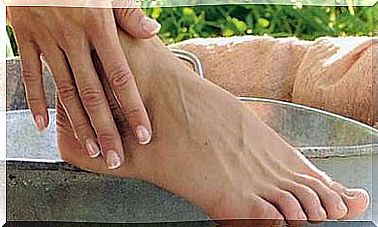6 Keys To Prevent Or Live With Diabetes
Lack of physical activity and a diet rich in refined flours and sugars can promote type II diabetes. Taking care of these aspects is the best prevention.

Prevention is basic. The Type I diabetes can not be prevented, but in the case of II, a healthy lifestyle with a balanced diet that provides an adequate weight and regular exercise can help much to curb its appearance. Although there is a certain genetic component, in most cases it will not manifest itself if the lifestyle is appropriate.
It is important, above all, to avoid obesity and being overweight. And for this we all know that it is crucial to follow a balanced diet. If diabetes already exists or has been in the family, prevention must be even more exhaustive.
An important measure is not to abuse fast-absorbing carbohydrates, as they cause a sharper increase in blood glucose, that is, they have a high glycemic index and therefore cause a greater release of insulin.
It is therefore a question of not “exhausting” the pancreas with an inadequate diet. Sugary drinks, pastries and, in general, foods rich in sugar should be limited as much as possible. Large meals also make the pancreas work harder.
In general, it is advisable to follow the well-known guidelines of the Mediterranean diet (fruits, vegetables, whole grains, legumes, nuts, fish and olive oil), as well as to moderate alcoholic beverages, salt and processed foods to the maximum.
Another basic aspect is to avoid sedentary lifestyle. The simple exercise of walking an hour every day is already a good preventive. Walking, like other types of exercises, consumes glucose and therefore prevents and improves its excessive presence in the blood in some way.
6 habits and measures that help with diabetes
1. Maintain regular meal times
It is advisable to follow regular meal times and avoid making them very large, so as not to overload the pancreas.
2. Prefer low glycemic index carbohydrates
Low glycemic carbohydrates should be the main source of energy , but this is influenced by the way food is combined and cooked. These steps can help:
- More fiber: Include fiber- rich foods such as legumes, whole grains, and fruits in every meal (their fructose does not produce the kind of rapid glucose rise that sucrose in refined sugar does). Fiber not only regulates glucose absorption but also helps control cholesterol.
- Cooking al dente: do not overcook farinaceous foods such as pasta or rice or vegetables.
- Sweeteners: avoid sugar and do not abuse synthetic sweeteners.
3. Bet on fresh and quality food
It is advisable to consume fresh food, healthy fats such as olive oil and little salt; drink water and avoid sugary sodas.
4. Practice daily exercise
It is important to increase physical activity throughout the day. Between 30 and 60 minutes a day of aerobic activity is the most desirable. Exercise improves insulin sensitivity and glucose tolerance, lowers cholesterol and triglycerides, and helps you lose weight.
5. Reduce stress
Hormones related to stress, such as adrenaline and cortisol, raise blood glucose levels. Yoga, for example, has been shown to improve both glycemic control and lung functions in diabetics.
6. Do hydrotherapy
Alternate baths (hot and cold water) are ideal to improve microcirculation, especially of the feet, legs and hands.









